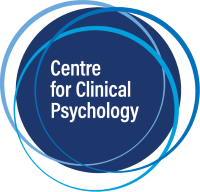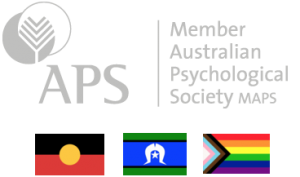Complex PTSD has entered the vernacular of clinicians, yet there is no clear outline in any of the current diagnostic manuals, International Statistical Classification of Diseases and Related Health Problems version 10 (ICD 10) , Diagnostic and Statistical Manual of Mental Disorders version 5 ( DSM 5 ) and The Psychodynamic Diagnostic Manual (PDM). The new ICD 11 proposes to include a new diagnosis of Complex PTSD diagnosis, and there is much debate about this. However, currently their is no Complex PTSD diagnosis.
So when a clinician says their client has complex PTSD, what do they mean? Some things to consider if you are using complex PTSD as a diagnosis.
- During the trials for the DSM IV Roth, S., Newman, E., Pelcovitz, D., van der Kolk, B., & Mandel, F. S. (1997) found that 92% of individuals who had the proposed Complex PTSD diagnosis met the criteria for the PTSD. This was why it was not included in the DSM5.
- Resick et al., (2012) Reviewed the Complex PTSD (CPTSD) literature and concluded that there is not enough empirical support for a distinct disorder. They outlined that there is a lack of definitional consensus amongst professionals; a lack of reliable, valid measures; and it was not yet clear if CPTSD depicts a separate disorder to PTSD or a more severe form.
- There is overlap of many disorders and PTSD is no different. The intersection between PTSD, depression, BPD and anxiety means clients can present with considerable distress.
- Complex posttraumatic stress disorder (CPTSD) is proposed for inclusion in the ICD-11 as a diagnosis distinct from posttraumatic stress disorder (PTSD), reflecting deficits in affective, self-concept, and relational domains. DSM 5 includes a number of these domains already. At this stage ICD-11 will require a diagnosis of PTSD before CPTSD can be diagnosed.
- The concept of “clinically meaningful” is often put forward as a reason for the use of CPTSD. However, if there is no consensus on definition of the meaning then this is not meaningful. Is your use of this term meaningful or helpful for clients?
- Complexity, does this mean multi-diagnostic? Does co-morbidity exist? Most clinicians would agree that it does, and yes, it is messy.
- Complexity, does this mean I find it hard to treat, “be with this client”? Does it mean I am not sure what to do?
- Resick et al., (2012) outlined that clinical trials have included people who would potentially meet the definition of CPTSD in terms of symptoms and complex trauma histories, and these people have responded to treatments that are effective for PTSD.
An example of a complex client
Considering PTSD severity – more symptoms in each cluster, more frequency, more intensity may look different, and may present the clinicians with challenges to manage both the client’s symptoms in session and their own reactions.
Compare client one with client two. Both have symptoms. One is more severe than the other.
Looking at cluster B criterion, the intrusive symptoms only.
The presence of one (or more) of the following intrusion symptoms associated with the traumatic event(s), beginning after the traumatic event(s) occurred:
- Recurrent, involuntary, and intrusive distressing memories of the traumatic event(s)
Client 1: Hourly intrusive memories, causing significant distress that last for 10 minutes
Client 2: Daily intrusive memories, causing mild distress that dissipates within 2-3 minutes
- Recurrent distressing dreams in which the content and/or affect of the dream are related to the traumatic event(s).
Client 1: Nightly dreams about the trauma, that awaken the client and then it takes an hour to return to sleep
Client 2: Experiences 3-4 dreams per month about the trauma, that occasionally awaken the client and they can return to sleep in 10-15 minutes
- Dissociative reactions in which the individual feels or acts as if the traumatic event were recurring (such reactions may occur on a continuum, with the most extreme expression being a complete loss of awareness of present surroundings.).
Client 1: hourly flashbacks, to the point of dissociation and disconnection for current surroundings, the client behaves if the trauma is happening. Eg posturing as if holding a gun.
Client 2: Experiences feeling a bit like it is happening again when they have an argument and voices are raised, they notice that at times they can be a bit zoned out of their current situation, but they can maintain an awareness of where they are, and that it is an argument, not the same as their traumatic experience.
- Intense or prolonged psychological distress at exposure to internal or external cues that symbolize or resemble an aspect of the traumatic event(s).
Client 1: Reported feeling fear and guilt, whenever they see a reminder of the event on TV. They have to leave the room because they feel so bad, and it takes an hour or so before they calm down
Client 2: Experiences a strong fear response in the context of being near authority figures who are directing them. This response subsides quickly, once they have left the situation or completed the request
- Marked physiological reactions to internal or external cues that symbolize or resemble an aspect of the traumatic event(s).
Client 1: Reported physical shaking when they see reminders on TV, and that this is noticeable to others who have commented. His family worry about this when it happens. It takes time to stop the shaking and he has to leave the room
Client 2: Reported that they have noticed that they have a strong knot in their stomach when initially around authority figures, however this dissipates as they stay in the situation, for example at the start of going through airport security and being directed to different sections they feel this, but by the end it has gone.
References
Roth, S., Newman, E., Pelcovitz, D., van der Kolk, B., & Mandel, F. S. (1997). Complex PTSD in victims exposed to sexual and physical abuse: Results from the DSM-IV field trial for Posttraumatic Stress Disorder. Journal of Traumatic Stress, 10, 539-555.
Resick, P. A., Bovin, M. J., Calloway, A. L., Dick, A. M., King, M. W., Mitchell, K. S., et al. (2012). A critical evaluation of the complex PTSD literature: Implications for DSM-5. Journal of Traumatic Stress, 25, 241-251.
[/notification]



